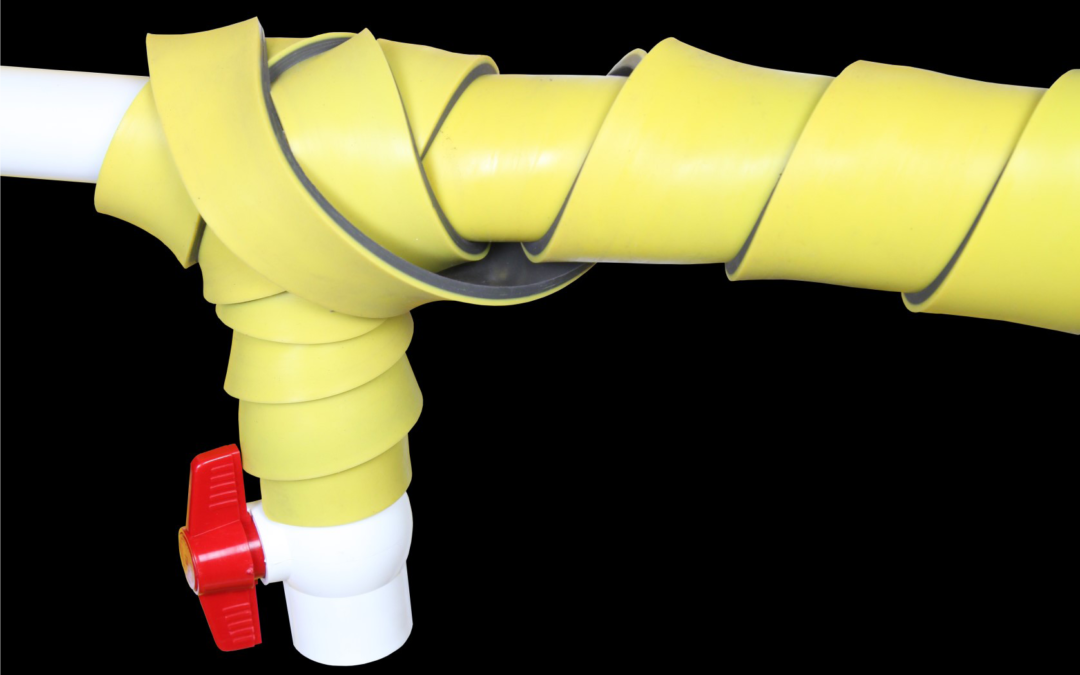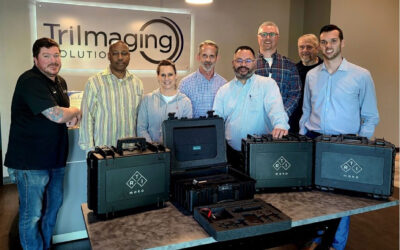By Paul Rochus
 An area where material science is advancing the field of radiation shielding is in the development of non-lead shielding materials. Lead is used today because it’s cost-effective, easy to work with and, most importantly, has the ability to reduce gamma radiation.
An area where material science is advancing the field of radiation shielding is in the development of non-lead shielding materials. Lead is used today because it’s cost-effective, easy to work with and, most importantly, has the ability to reduce gamma radiation.
One drawback of lead is that it is a toxic substance if ingested into the body. Given the toxicity, innovations are being made to produce thinner, more flexible and effective non-lead shielding solutions. Specifically, polymers are being utilized for their material properties. They are infused with tungsten and other metals to produce a new generation of shielding products.
Composition of Polymer Based Shielding Materials
Non-lead alternatives come in a variety of forms. The main sheet form are metal-impregnated polymers which is a polymer that contains a shielding material. This capitalizes on the shielding properties of the metal, and the flexibility of the polymer.
 The composition of these materials can vary depending on the product but generally, a polymer base is used for the product. Materials such as metals and non-lead, high atomic numbered elements are added for shielding including Tungsten, Bismuth, and Iron. The percentage of these materials can vary anywhere from 0-95% of the material depending on the product. In addition, to improve the material properties, other materials like glass and carbon fibers are also in the material.
The composition of these materials can vary depending on the product but generally, a polymer base is used for the product. Materials such as metals and non-lead, high atomic numbered elements are added for shielding including Tungsten, Bismuth, and Iron. The percentage of these materials can vary anywhere from 0-95% of the material depending on the product. In addition, to improve the material properties, other materials like glass and carbon fibers are also in the material.
Nanotek Shielding
Nanotek TechnologyTM has been developed to provide an alternative to lead radiation shielding. The result is a polymer-based shielding material. It can be made into thin materials to replace sheet lead and installed on walls with its adhesive backing, or the material can be used to provide thicker shielding in the form of interlocking bricks. This material can be molded into custom shielding pieces and used as curtains, shielded vests or in nuclear medicine vials.
Table 1: Nanotek RSM Attenuation of Iodine-131 (364 keV)
| Material Thickness | Nanotek RSM |
| 2.70 mm | 32% |
| 5.45 mm | 52% |
| 8.17 mm | 71% |
| 10.90 mm | 79% |
| 16.30 mm | 88% |
| 21.73 mm | 93% |
Metal Impregnated Polymers
These materials have been commonly used in the nuclear industry as an alternative to lead wool blankets. Usually made with a shielding material of iron, bismuth or tungsten, these materials come in sheet form and in the form of strips for wrapping around and shielding pipes. Much like the Nanotek, this material can also be molded for custom shielding pieces. In addition, magnets, or gromets can be placed in the materials to allow for hanging from racks or attaching to metal surfaces. Protective layers can also be added to increase the durability of a sheet of material.
Table 2: T-Flex Attenuation of Co-60 Gamma Radiation (1250 keV)
| Material Thickness | T-Flex Tungsten | T-Flex Bismuth | T-Flex Iron |
| 0.25” | 17% | 12% | 6% |
| 0.5” | 32% | 24% | 12% |
| 1” | 54% | 42% | 23% |
| 2” | 80% | 67% | 41% |
| 4” | 96% | 90% | 66% |
 Using tungsten and other heavy metal composites is an innovative way to provide effective shielding and is a viable alternative to lead. Due to the flexibility and non-toxicity, the possible uses of these materials are endless. For more information, click here.
Using tungsten and other heavy metal composites is an innovative way to provide effective shielding and is a viable alternative to lead. Due to the flexibility and non-toxicity, the possible uses of these materials are endless. For more information, click here.








